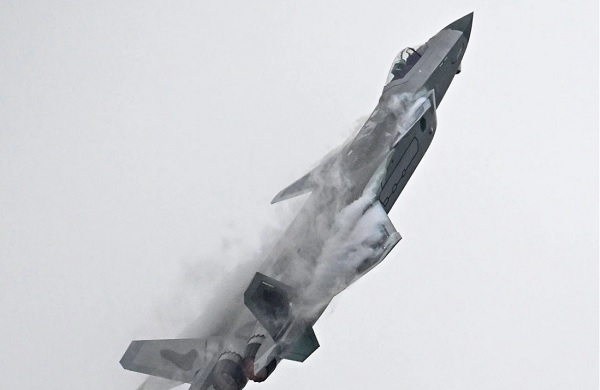Beijing, June 28, 2024 – In a landmark achievement for aerospace innovation, Chinese engineers have successfully conducted a test flight for a ‘new concept’ human-drone integrated design, potentially revolutionizing the future of next-generation fighter jets. The test flight, which took place at an undisclosed location, demonstrated the feasibility and stability of this cutting-edge concept.
The new design features a hybrid system that seamlessly integrates human piloting with advanced drone technology. The concept allows for a flexible approach to aerial combat and reconnaissance missions, where a human pilot can either directly control the aircraft or rely on autonomous drone capabilities for certain operations. The smooth test flight was conducted by a team from the Aviation Industry Corporation of China (AVIC), a state-owned aerospace and defense conglomerate. According to AVIC, the test flight met all key performance metrics, including maneuverability, stability, and responsiveness.
“We are excited to announce that the new concept human-drone integrated design has passed its initial flight tests with flying colors,” said Zhao Guangyi, the lead engineer for the project. “This success marks a significant milestone in our efforts to develop the next generation of fighter jets, combining the strengths of human intuition and advanced autonomous systems.”
The hybrid design is expected to offer numerous tactical advantages. By incorporating drone technology, the new fighter jet can perform a variety of roles, from high-speed dogfights to stealthy surveillance missions, with greater efficiency and reduced risk to human pilots. This flexibility could prove crucial in modern warfare, where adaptability and rapid response are key.
Moreover, the new design aims to leverage artificial intelligence and machine learning to enhance decision-making processes during missions. Autonomous systems can assist with real-time data analysis, threat assessment, and even executing complex maneuvers, thereby reducing the cognitive load on the pilot and increasing mission effectiveness. The successful test flight has drawn attention from military analysts worldwide, who see it as a significant step forward in aerospace technology. It also underscores China’s commitment to advancing its military capabilities through innovative designs and cutting-edge technology.
While specific details about the aircraft’s capabilities and future development plans remain classified, AVIC officials hinted that further tests and refinements are planned in the coming months. The goal is to eventually integrate this new concept into China’s aerial combat fleet, providing a formidable edge in air superiority.
In conclusion, the smooth test flight of the new concept human-drone design represents a groundbreaking achievement for China’s aerospace industry. It signals a future where the fusion of human and autonomous systems could define the next generation of fighter jets, setting a new standard for military aviation worldwide.


